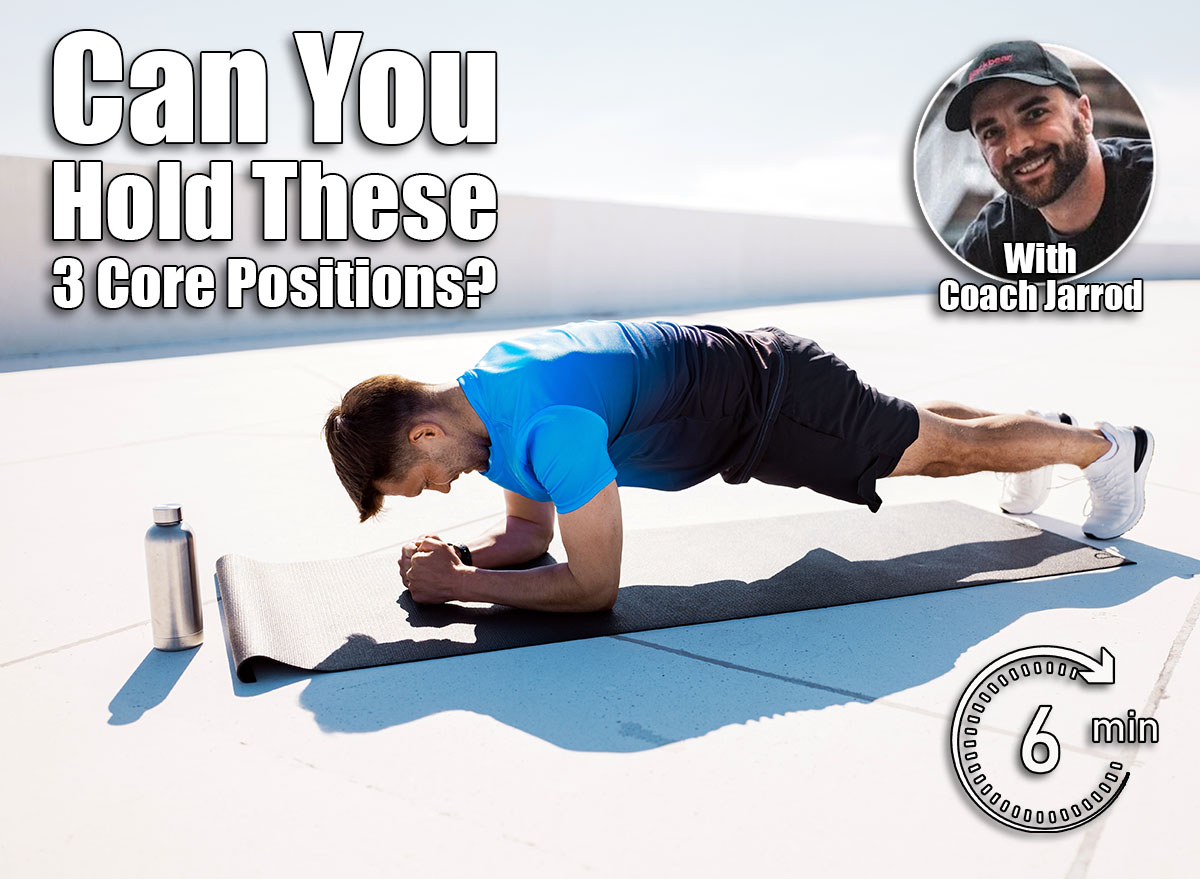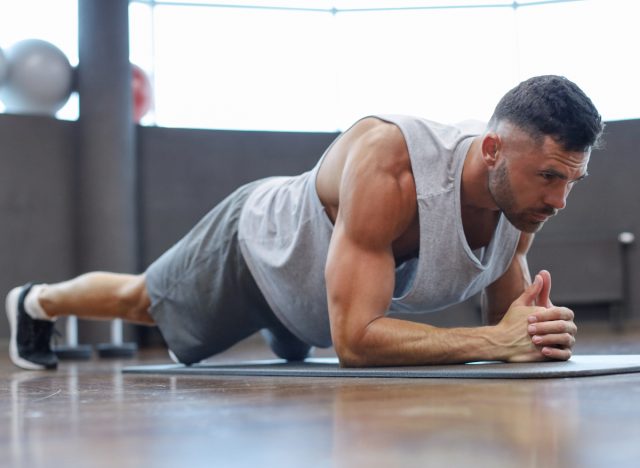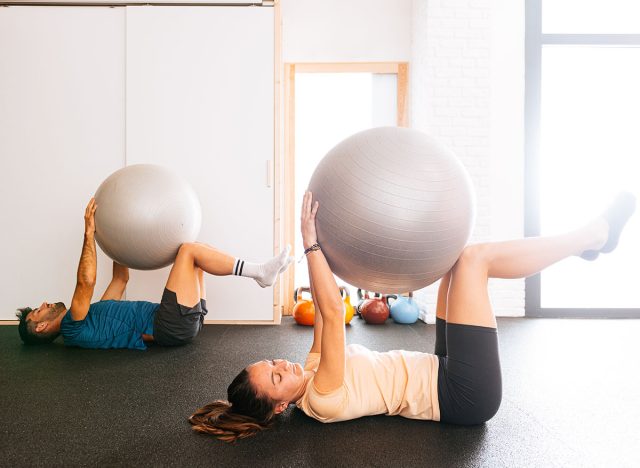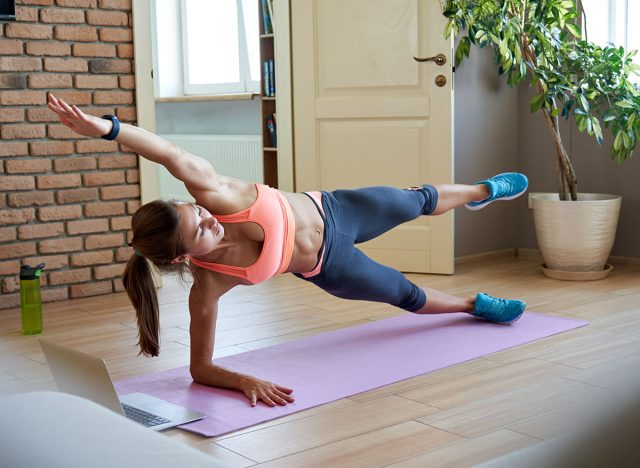If You Can Hold These 3 Positions After 45, Your Core Is Elite

A strong core does more than make you look fit. Sure, a six-pack might be pretty cool after 45, but your core plays a much larger role than aesthetics. It keeps your spine safe, helps you move with confidence, and makes everyday activities like bending, lifting, and carrying feel easier. After 45, having that kind of strength becomes even more critical because it supports your balance, posture, and long-term mobility.
The best way to know if your core is up to the challenge? Test it. These holds show exactly how well your muscles can stabilize and control your body under tension. They take your abs beyond basic exercises and challenge the deep muscles that keep you steady.
If you can meet these benchmarks, your core strength is well above average. If you can exceed them, you’re operating at an elite level for your age.
Here are the three positions worth testing and how long you should aim to hold each one.
Position #1: RKC Plank (Hard Style Plank)

The RKC plank is a stronger, more focused version of a standard plank. It forces your core, glutes, and shoulders to work together in full-body tension. This type of bracing translates to better protection for your spine and more power in every lift and athletic movement.
Muscles Trained: Rectus abdominis, transverse abdominis, obliques, glutes, shoulders.
How to Do It:
- Get into a forearm plank position with elbows directly under your shoulders.
- Squeeze your glutes and quads as hard as you can.
- Pull your elbows toward your toes without actually moving them to create full-body tension.
- Keep your back flat and avoid letting your hips sag or rise.
- Maintain steady breathing while keeping every muscle engaged.
Performance Benchmark:
- Average: 30 to 45 seconds
- Good: 45 to 60 seconds
- Elite: 60+ seconds
Recommended Sets and Reps: Knock out 3 to 4 sets, resting 45 to 60 seconds between each set.
Best Variations: Plank pull-through, weighted plank, plank with shoulder taps.
Form Tip: Imagine pulling your elbows and toes toward each other to lock your core in place.
Position #2: Dead Bug Hold with Stability Ball

The dead bug hold challenges your ability to resist extension and rotation. Pressing a ball between your arms and legs forces your deep core muscles to engage, keeping your spine steady as your limbs extend. This carryover improves coordination between your upper and lower body while giving your back more stability.
Muscles Trained: Transverse abdominis, rectus abdominis, hip flexors, lower back stabilizers.
How to Do It:
- Lie on your back with a stability ball pressed between your hands and knees.
- Extend your arms straight up and your knees directly over your hips.
- Press hard into the ball with both your hands and legs to activate your core.
- Flatten your lower back against the floor and keep it there throughout the hold.
- Maintain steady breathing without letting the ball shift or your back arch.
Performance Benchmark:
- Average: 20 to 30 seconds
- Good: 30 to 45 seconds
- Elite: 45+ seconds
Recommended Sets and Reps: Knock out 3 to 4 sets, resting 45 to 60 seconds between each set.
Best Variations: Dead bug with alternating arm and leg extension, dead bug with resistance band, hollow body hold.
Form Tip: Push into the ball as if you are trying to pop it to engage your core fully.
Position #3: Side Plank with Hip Abduction (Leg Lift)

This side plank variation adds a leg lift, making it far more demanding. It strengthens your obliques, glute medius, and other lateral stabilizers that are often overlooked. This combination improves hip and spine health while helping you maintain balance and stability.
Muscles Trained: Obliques, quadratus lumborum, glute medius, shoulders.
How to Do It:
- Lie on your side with your forearm on the floor and your elbow under your shoulder.
- Lift your hips off the ground so your body forms a straight line from head to heels.
- Raise your top leg until it’s in line with your hip.
- Keep your core tight and avoid letting your hips drop.
- Breathe steadily while holding the position.
Performance Benchmark:
- Average: 20 to 30 seconds each side
- Good: 30 to 45 seconds each side
- Elite: 45+ seconds each side
Recommended Sets and Reps: Knock out 3 to 4 sets per side, resting 45 to 60 seconds between each hold.
Best Variations: Weighted side plank, kneeling side plank with leg lift, side plank with hip dips, Copenhagen plank.
Form Tip: Press your forearm into the ground and keep your hips stacked to avoid twisting.
How to Improve Your Core Positions After 45
Building up to these benchmarks takes practice, but you don’t need marathon sessions to get there. Focus on quality holds and steady progress, and you’ll notice a big difference in how strong and stable your core feels.
Here’s how to get better:
- Start with shorter holds: If you can’t hit the benchmark yet, aim for 10 to 20 seconds of perfect form and build from there.
- Add tension, not time: Focus on squeezing your core, glutes, and shoulders as hard as you can. More tension makes your holds more effective.
- Use easier variations first: Side planks with knees bent or basic dead bugs are significant starting points. Progress to the advanced versions as your strength improves.
- Train consistently: Hit these positions 3 to 4 times a week. Consistency is what builds lasting strength.
- Pair with strength work: Lifts like carries, squats, and rows help reinforce the core stability you’re building with these holds.
Master these positions, and you’ll notice more than just better core endurance. You’ll feel stronger in your workouts, more stable in daily life, and more confident in how your body moves as you age.
Looking for more easy ways to lose fat? Here’s How Long Your Walking Workout Should Be To Shrink Belly Fat.